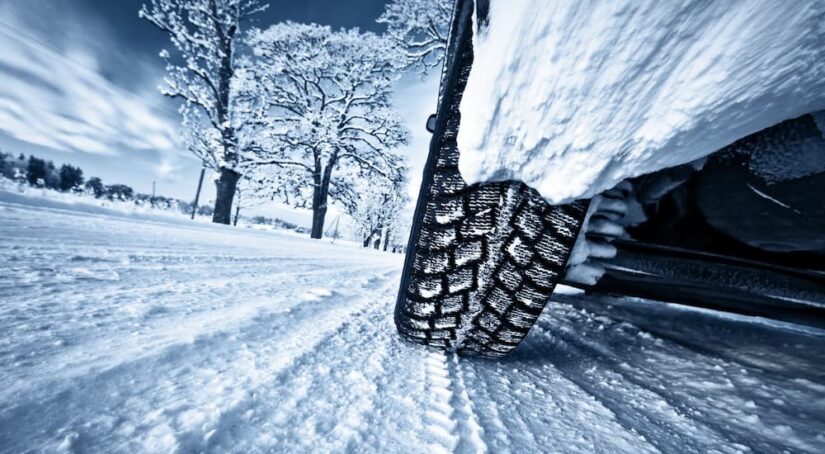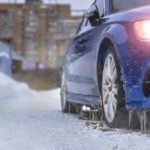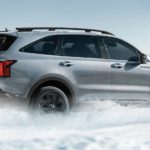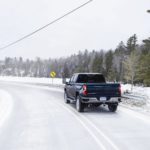Winter driving can be a real challenge between slick roads, plow trucks, and the visibility issues caused by tall snowbanks. In an ideal world, drivers could wait until a storm has passed to pick up their kids or go about their daily commute, but sometimes, venturing out in challenging winter conditions simply can’t be avoided. That said, there are a few ways to make the trek easier. Good driving habits are vital, as is investing in a good pair of winter tires, but the importance of choosing the right type of vehicle simply can’t be understated. While many of today’s cars are more versatile than ever, there are certain characteristics, segments, and designs that will make winter driving more of a challenge than it needs to be. To help you get a grip on some of the common pitfalls of winter driving, we’ve compiled a list of some attributes to avoid when searching for your next year-round ride. From low-slung convertibles and top-heavy SUVs to rear-engine roadsters and those with a poor reputation for traction and braking, read on to discover which vehicles are particularly susceptible to the ravages of Old Man Winter.
Rear-Wheel Drive (RWD)
Rear-wheel drive (RWD) offers several advantages for drivers seeking a driving experience that puts the focus on performance. With the front wheels handling all the steering duties, the rear wheels are free to provide all the power, not to mention the improved balance that comes from having some of the weightier components relegated to the back of the vehicle. Performance-related advantages aside, the RWD setup can adversely impact road safety when the white stuff starts to fly. In a front-wheel drive vehicle, the weight of the engine helps to keep the drive wheels firmly planted on the ground, but the loss of traction that comes with the RWD setup can lead to fishtailing as the rear end of the vehicle skids out to the side when accelerating or taking a turn. Adding a little weight to the rear end of the vehicle in the form of sandbags or a bucket of road salt can help to weigh down the drive wheels, but if you live in an area that experiences consistent winter weather, a RWD vehicle might not be the best choice as a daily driver.
Common Culprits: Ford Mustang, Chevy Camaro, Mazda MX-5, Subaru BRZ, BMW M2/i4, Porsche 911
Lightweight
Weight can have a big impact on traction. This presents a real problem when it comes to some of the lighter vehicles on the road today, many of which simply don’t boast enough poundage to operate safely in winter driving conditions. The lighter a vehicle is, the more likely it is to slide across the road as you’re driving. While models like the Mitsubishi Mirage (2,095 lbs), Chevrolet Spark (2,246 lbs), Nissan Versa (2,599 lbs), and Hyundai Accent (2,679 lbs) might offer some real advantages in terms of efficiency, they’re not the most sure-footed options on the market.
Common Culprits: Mitsubishi Mirage, Chevrolet Spark, Mazda MX-5, Nissan Versa, and Hyundai Accent, Kia Rio, MINI Cooper
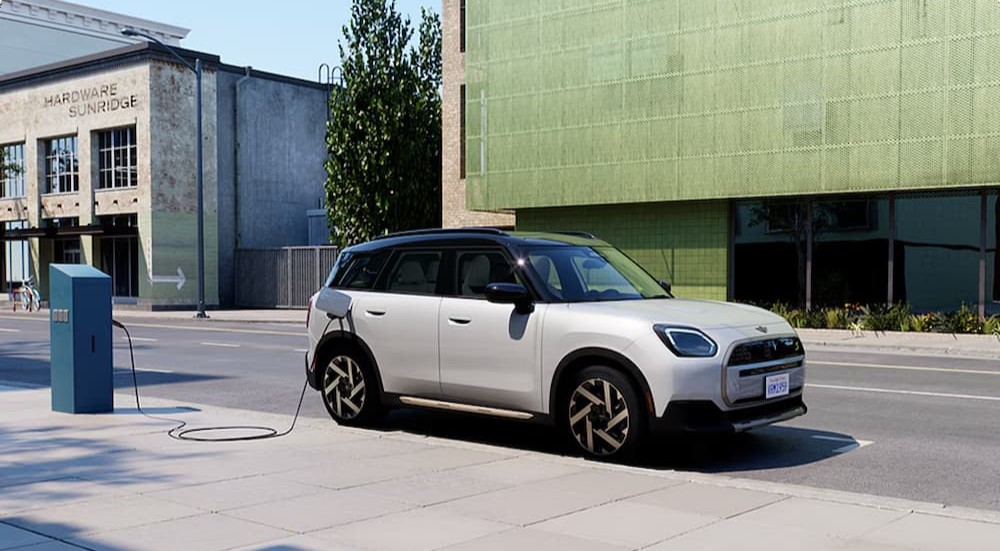
High Center of Gravity
A tall vehicle can give a driver a commanding view of the road, but the higher your ride, the higher its center of gravity. An object’s center of gravity describes the average location of its weight, top to bottom. The taller a vehicle is, the easier it is to tip over. This isn’t usually an issue for traditional sedans and coupes, but it’s a different story when looking at the SUV and pickup segments. These vehicles might pack 4WD, knobby tires, and other attributes that allow them to excel in winter driving conditions, but their top-heavy design brings some inherent disadvantages in terms of balance. However, height and ground clearance aren’t the only factors to consider when determining a vehicle’s rollover potential. Take the Rivian R1S, for example. The electric luxury SUV’s 14.9 inches of ground clearance might raise some eyebrows, but when you consider the EV’s 6,500-pound curb weight and that 1,602 of those pounds are concentrated in the floor-mounted battery, the R1S is a pretty stable option.
Common Culprits: Pickup trucks and SUVs
Rear- and Mid-Engine Designs
A common feature of the supercar segment, rear- and mid-engine designs can provide some thrilling benefits in terms of acceleration and performance. With so much of the vehicle’s weight centered towards the back of the vehicle, it’s easy to get a scintillating start off the line and speed to 60 mph at a record pace. The Porsche 911 is one of the last major production models to boast a rear-engine design. Mid-engine designs are a little more popular, but outside of the Chevy Corvette, they are similarly limited to the higher end of the high-performance market, with brands like Lamborghini, Lotus, and Ferrari still championing the mid-engine approach.
Vehicles like the Porsche 911 might provide a once-in-a-lifetime driving experience, but could also lead to some unfortunate automotive memories if asked to perform in the wrong conditions. A rear-engine car like the 911 is far more prone to oversteer than a mid- or front-engine car. Shifting the weight to the middle or rear of the car can throw off a model’s weight distribution and make it tough to handle when the road is covered with ice or snow. Oversteer and understeer are common, and while a driver might eventually learn how to compensate for this less-than-ideal setup, it might be a lesson you have to learn the hard way.
Common Culprits: Porsche 911, Chevy Corvette, Lamborghini Countach, Diablo, and Murcielago
EVs
Electric vehicles offer countless benefits in terms of efficiency, but they are particularly susceptible to cold temperatures. According to some estimates, an EV’s range can decrease in low temperatures by 25 percent when moving at highway speeds and as much as 50 percent when faced with a lot of stop-and-go driving. This is because the lithium-ion batteries in many of today’s EVs don’t perform as well when things get chilly. EVs must also draw on the battery pack to pump heat into the cabin, whereas internal combustion vehicles simply capture excess engine heat. While all EVs lost some range in low temperatures, some fare better than others. The Tesla Model Y, Audi e-tron, and Jaguar i-Pace held up pretty well, losing only 3 to 15 percent of their capacity. The BMW i3, Ford Mustang Mach-E, and Chevy Bolt are some of the worst offenders, sacrificing 24, 30, and 32 percent of their capacity.
Common Culprits: BMW i3, Ford Mustang Mach-E, Chevy Bolt
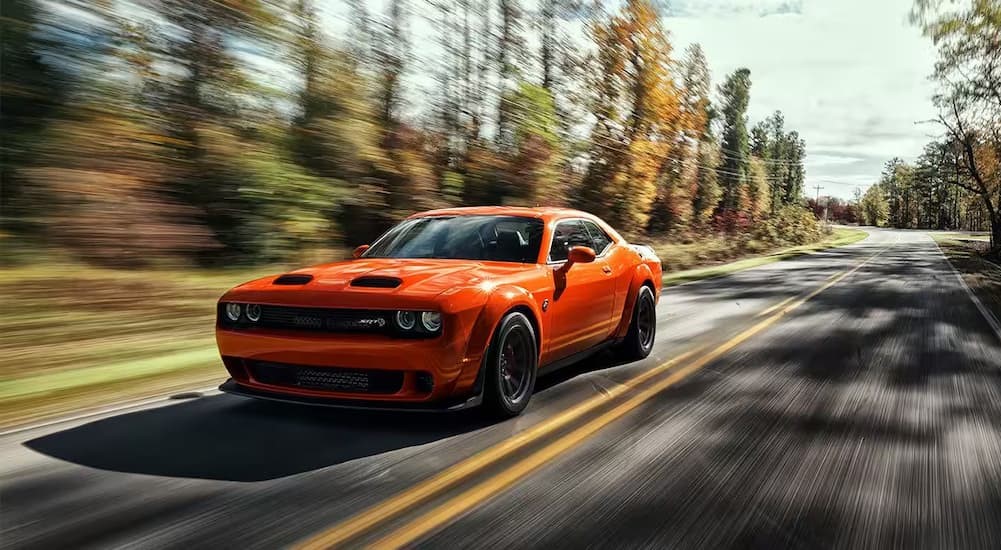
Low Ground Clearance
It doesn’t take an automotive mastermind to understand why a vehicle with low ground clearance isn’t likely to fare well on a snow-covered road. A low-lying luxury sedan like the Mercedes-Benz E-Class can provide a crisp steering response and hug the curves with the best of them, but with just 4.2 inches of ground clearance, it’s also prone to acting like a $63,000 snow plow if you hit the road too soon after a storm. Low ground clearance is a common issue among European sports cars, including Porsche, BMW, Mercedes-Benz, and the like, but the Chevy Corvette and Dodge Challenger don’t fare much better with just 5.2 inches of wiggle room to work with. These models aren’t just more likely to get mired in the snow, they’re also more prone to undercarriage damage and are usually outfitted with slick summer sports tires that don’t hold up well from a traction perspective when the thermometer starts to drop.
Common Culprits: Porsche Carrera GT, Mercedes Benz E-Class/SL-Class/E-Class, Dodge Challenger, Chevy Corvette
Bad Brakes
Few components impact a vehicle’s safety quite as much as its brakes. This is particularly true of winter driving, where the ability to stop quickly can mean the difference between a near miss and a costly accident. A vehicle’s braking ability is largely dictated by both its actual brake pads, rotors, and calipers, along with the amount of weight they’re being asked to keep in check. The heavier a vehicle, the more effort it takes to bring it to a stop, which is why loaded, high-performance versions of popular pickups like the 6,200-pound Ram 1500 TRX and 6,800-pound Ford F-150 Raptor both perform poorly. The Ram TRX takes around 418 feet to slow from 100 to zero mph, while the F-150 Raptor fares even worse at 430 feet. The Jaguar F-Type is another notable disappointment, though at 4,000 pounds it can’t blame its performance on weight alone. To add insult to injury, the F-Type’s carbon-ceramic brakes ring in at $12,000 but are said to be notoriously unreliable on snowy roads.
Common Culprits: Ram 1500 TRX, Ford F-150 Raptor, Jaguar F-Type
You probably noticed a few trends while reading through the list, especially in terms of high-performance vehicles like sports cars. While cars like the Porsche 911 and Dodge Challenger can provide the sorts of thrills you aren’t likely to experience behind the wheel of a family-friendly SUV or 4WD pickup, they simply weren’t designed with snow or ice in mind. These sporty vehicles have their place in a driver’s automotive arsenal but generally aren’t the right choice for all seasons. If you live in an area that regularly experiences harsh winter driving conditions, 4WD can be a priceless feature. There’s a lot to be said for using the right tool for the job, especially when it comes to winter driving. Choose wisely, and you’ll be cutting through the worst winter has to offer with relatively little fuss, but the vehicle could have you putting in some serious shovel work while you wait for a tow truck to arrive.
